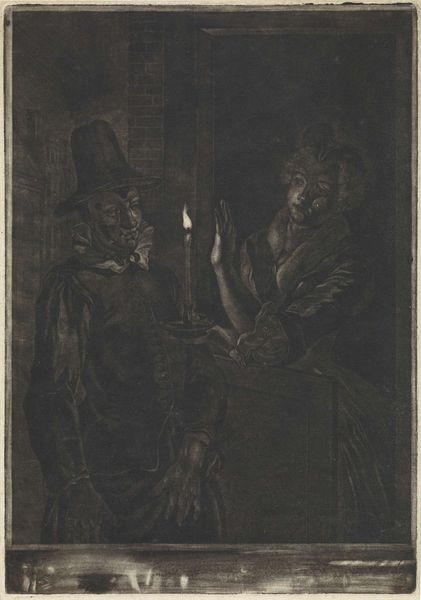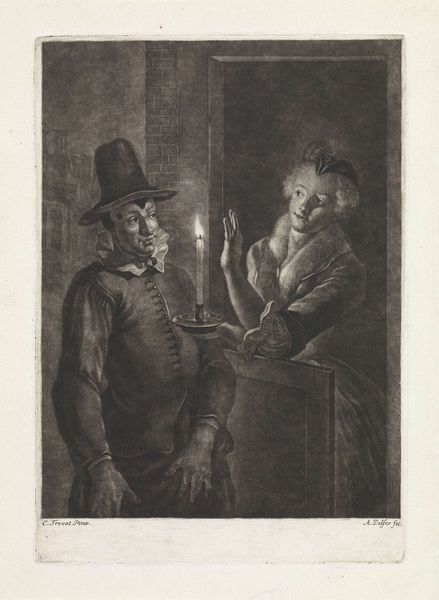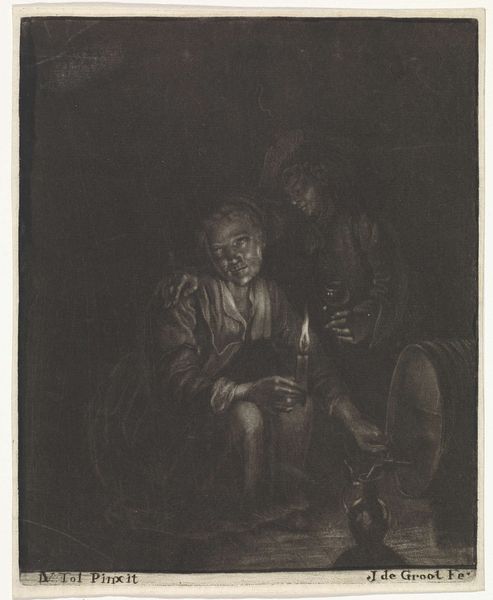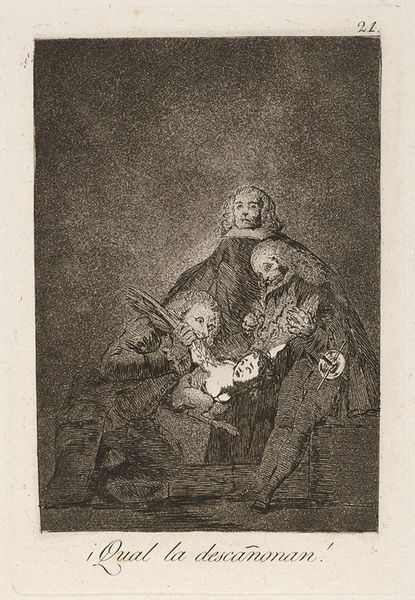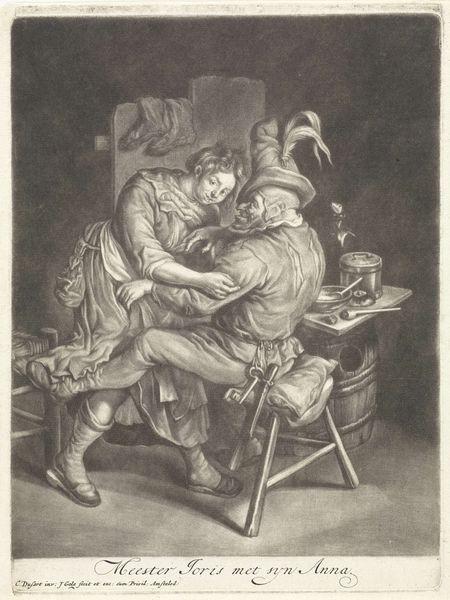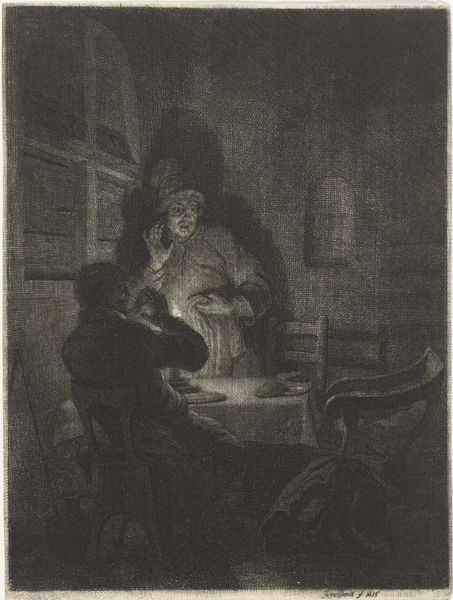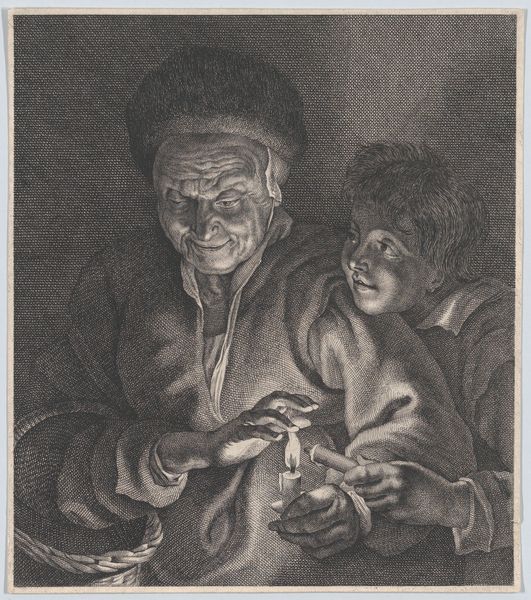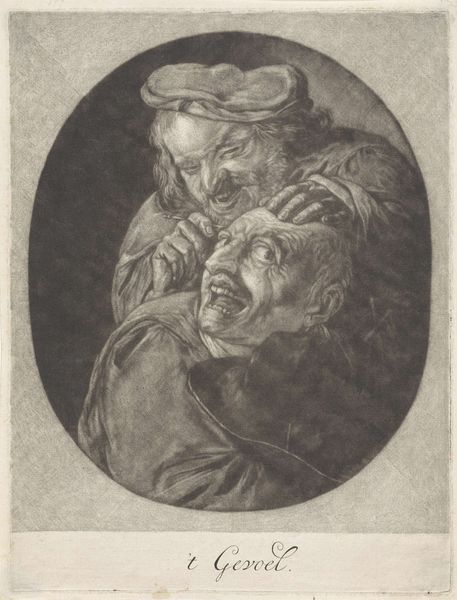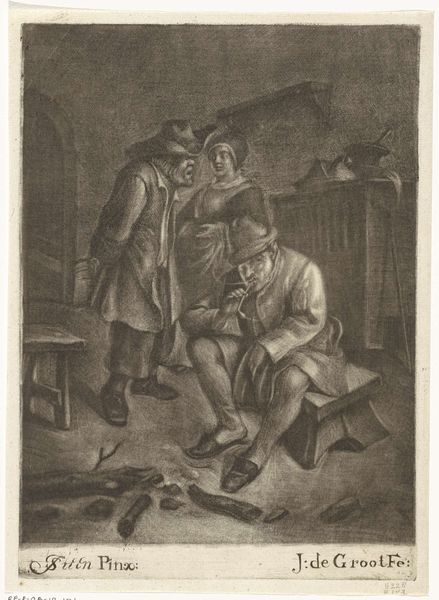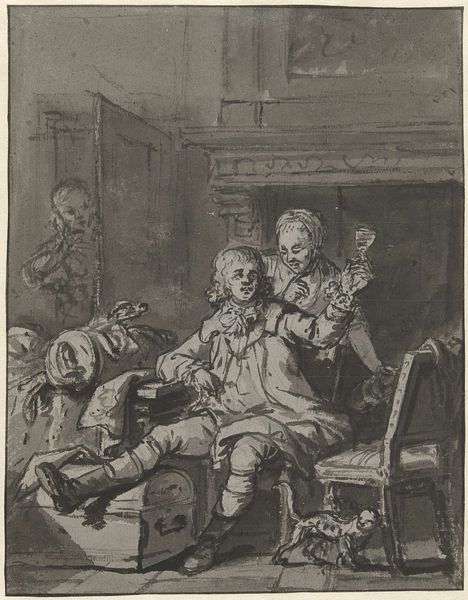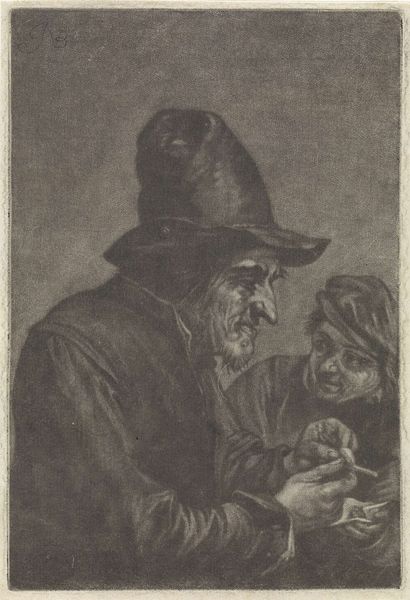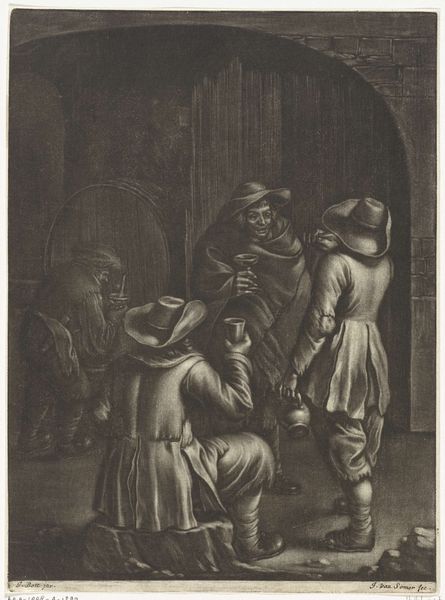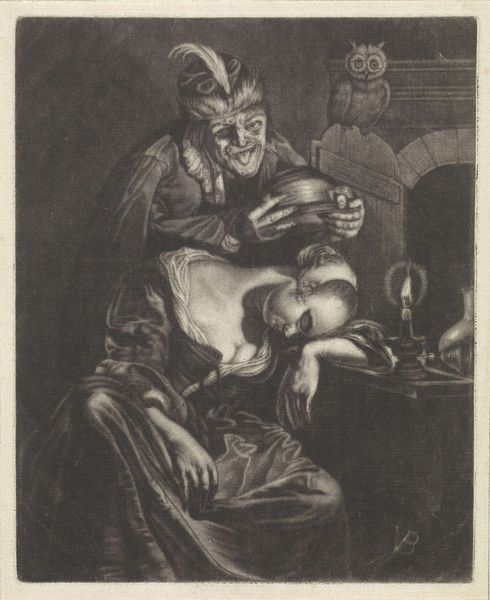
Jan Claasz of de gewaande dienstmaagd: de liefdesverklaring van Reinier Adriaansz Possibly 1741 - 1820
0:00
0:00
abrahamdelfos
Rijksmuseum
Dimensions: height 240 mm, width 168 mm
Copyright: Rijks Museum: Open Domain
Curator: Abraham Delfos created this engraving, possibly between 1741 and 1820, titled *Jan Claasz of de gewaande dienstmaagd: de liefdesverklaring van Reinier Adriaansz.* Currently, it resides here at the Rijksmuseum. Editor: It's a somber scene, dramatically lit. The stark contrast immediately pulls the eye to the two figures, and I get a slightly unsettling feeling. It is heavy with this tension and dramatic light and shadows. Curator: Yes, Delfos uses the engraving technique skillfully to create this chiaroscuro effect. Note how the light source, the single candle, not only illuminates the figures but also dictates the composition's focal point. It's quite Baroque in its execution. Editor: I wonder, though, about the power dynamics at play. We see the woman slightly elevated, hand raised, almost defensively, and the man holding the candle— seemingly vulnerable with the upturned look on his face, his hand gently rested at the edge. I'm also thinking about the title's implication, *de gewaande dienstmaagd,* or "the supposed maid." What does this suggest about their relative social standings and any possible transgression? Curator: Certainly, there is a narrative complexity implied. The woman’s gesture could be interpreted in numerous ways; refusal or surprised acknowledgment or shock? Consider the materiality. This is not a painting with layers of color and illusion; it’s a print, fundamentally reproducible. It's more than a portrait or simple narrative genre painting, though. It suggests a circulating story and characters, potentially echoing theatrical or popular culture motifs of the period. Editor: I think focusing on those possible motifs might point towards something larger. Looking through the lens of social commentary, what could the image be saying about love, class, and deception in 18th-century Dutch society? How does Delfos play with established tropes to either reinforce or critique societal norms? Curator: Ultimately, this print embodies the artist’s mastery of a medium, crafting a balanced composition infused with the potential to explore those cultural narratives. It presents the viewer a framed moment to dwell on, while suggesting more beyond that singular frame. Editor: Agreed, and placing it within its socio-historical moment, those details start to tease at much larger dialogues around gender, and the shifting class consciousness of the period. It’s more than just pretty light and dark; it's a social snapshot, with ambiguities designed to make us reflect.
Comments
No comments
Be the first to comment and join the conversation on the ultimate creative platform.
